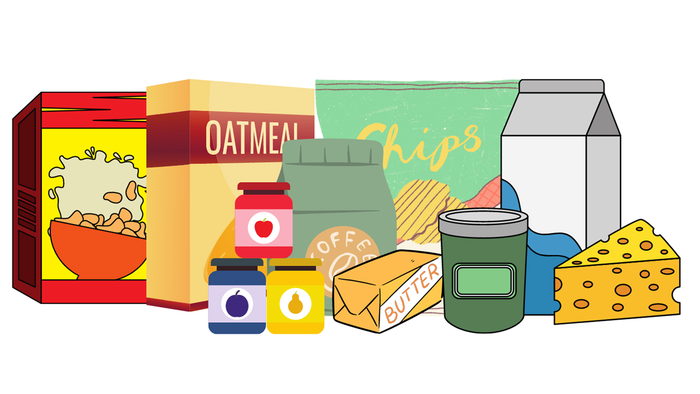January 18, 2021

Cash flow is the lifeblood of any business.
“You can go a long way without profit, but you can’t go a day without cash—it is the literal definition of surviving,” says Gary Hirshberg, co-founder and chairman of Stonyfield and founder of the Hirshberg Entrepreneurship Institute. Unfortunately, many retailers only look at profit and loss, not understanding that cash flow is very different.
Put simply, it means knowing how much money is flowing in and out of the business—and when—and then forecasting based on those numbers. This may sound complex, but there are excellent free tools available, such as Hirshberg’s interactive worksheet (https://bit.ly/cashsheet), that make it quite simple.
Here are nine smart strategies for managing and forecasting cash flow and freeing up money when facing a squeeze.
Business consultant
 Gary Hirshberg, co-founder and chairman of Stonyfield
Gary Hirshberg, co-founder and chairman of Stonyfield
and founder of the Hirshberg Entrepreneurship Institute
Stay in your numbers. Your job is not living in the present, but living one, two, three, four weeks ahead. Planning for the future is what prevents cash flow from attacking you. The tool I developed long ago, I still use today, and in my business’s darkest days, I used it daily. You can’t be in your numbers too frequently. When you’re in them, two great things happen: One, you can anticipate and head off disaster when rent is due, payroll is due and UNFI is planning on its big monthly payment. Second, you get to know your business better and find hidden gems.
Partner with vendors to save cash. Many retailers end up facing Sophie’s choice: pay the landlord, pay the fuel bill or pay employees? It’s hard to stretch employees or landlords, but if you see your suppliers as partners, not adversaries, it opens a lot of doors. If you know a squeeze is coming, get ahead of it with the distributor or manufacturer—or, ideally, have a three-way discussion. Propose creative things you can do for them that don’t require more cash on your part. For example, a vendor may be open to a delay or slower turns if you improve their shelf position, offer an endcap or place a free ad.
Overcommunicate and deliver. Retailers often go into bunker mentality: “I can’t talk. I’m not able to pay, therefore I’m guilty or bad.” Take the opposite view. For a period in the late 1980s, I lost $25,000 a week for 50 weeks. Each week I had to come up with $25,000, which I didn’t have, so I turned to my lead suppliers for help. I learned the solution is to overcommunicate. Each Monday, I’d tell my fruit and milk suppliers exactly how much I’d send them on Thursday. Even if it wasn’t the full amount, I did exactly what I’d said I would. This built very trustworthy relationships because my suppliers knew that if I went down, it would be bad for them too.
Retailer
 Dean Nelson, owner of Dean’s Natural Food Market,
Dean Nelson, owner of Dean’s Natural Food Market,
New Jersey
Learn your inventory and labor costs. The two biggest variable expenses are inventory and labor, but very few small and medium-sized retailers know how to buy properly or manage labor to stay profitable. The first thing I’d do is generate a P&L and balance sheet to see where your money is going. Do a year-over-year comparison of 2019 to 2020, and look for any disparities. Next, buddy up with a similar-sized retailer with enough experience to say “this is where your numbers should be.” If your labor is 24% of sales, that’s a major problem—but you won’t know that if don’t know your labor as a percentage of sales. Then take your inventory and do the same thing.
Don’t mistake profit for cash. A false indicator of profitability is money in the bank. You could have $100,000 in inventory, sell down $20,000 and think you made $20,000 in profit. But in reality, all you did was transfer assets. You’re in no way more profitable, because inventory and cash are the same thing. When I opened 26 years ago, I ran out of money in three months. I said that’s it, I’m done. My uncle, who had knowledge about this stuff, asked what my inventory was like. I didn’t know. He told me I had to do inventory, and when I did, I learned I was buying more than I was selling and taking money from the bank and turning it into inventory.
Use surpluses wisely. We were fortunate to be very profitable in 2020, so we had a surplus of cash. First, we paid off almost all of our company debt, because with so much uncertainty, the last thing we wanted to do was carry expenses. Next, we allocated a percentage of profits to upgrading equipment. We also gave raises to people who worked hard and deserved it. Finally, we retained some earnings. We wanted to keep a certain amount of cash on hand so that if things get wacky, we know that for the next 12 months, we’ll be in good shape financially.
Retail strategists
 Pat Johnson and Dick Outcalt, co-founders of The Retail Owners Institute,
Pat Johnson and Dick Outcalt, co-founders of The Retail Owners Institute,
a free online resource offering financial education for retailers
Owners, take ownership. Because cash flow is the most significant aspect of business survival, it is the store owner’s obligation. Don’t rely on others or your POS system to do it. Your accountant and bookkeeper are trained historians, but cash flow is about looking ahead, and owners have the best guesstimates as to what is and isn’t plausible. Just grab a piece of paper, draw a matrix, and pencil in an estimate of cash going in, cash going out and the difference between them for the next four months. Carry this with you at all times, because four hours later, you might do it again.
Remember the theater of retail. Shrinking inventory without replacing it is one of the best ways to arrange for more cash. But along with the back room, also cut it on the sales floor. Customers need to see that you have plenty of inventory, but you can make the store look very full when it’s actually not—that’s the theater of retail. For items hanging on pegs, for example, put in two-inch instead of five-inch pegs so you can’t fit as many items on each. For the produce area, have bins that are shallower than they look, or put something in the bottom of larger bins so you don’t have to fill them. This keeps produce fresher too, which is what customers want anyway.
Know your debt-to-worth ratio. Retailers often don’t realize how strong they are financially because they don’t understand how to read the balance sheet. If sales are down but they have a low debt-to-worth ratio, they are actually very strong—particularly if they have positive cash flow. In today’s world, if you have a low debt-to-worth ratio—two-to-one or less—you’re in an unprecedented driver’s seat. Now is the time to consider buying other stores if you want. Many retailers are reluctant to take on loans, which can constrain their growth, but if you don’t have debt, you can borrow a lot of money right now.
About the Author
You May Also Like
.png?width=700&auto=webp&quality=80&disable=upscale)




